Copyright 2020 - 2021 irantour.tours all right reserved
Designed by Behsazanhost
The most beautiful decorative ceilings
The most beautiful decorative ceilings
These ceilings with breathtaking decoration will fascinate you
Religious sites, charities, and especially mosques have a special position among Muslims. These places have
These places are decorated with the most beautiful decorative arts such as painting and tiling. The artists have presented their best effort in the decoration of mosques and religious buildings and they have tried to establish a special and sacred connection between worldly and heavenly beliefs. Pleasant colors and beautiful tiles used in decorating have doubled the sanctity and spirituality of these buildings.
In this section, we will introduce you to the most beautiful ceilings which are decorated by Iranian artists
These ceilings fascinate the eye of all visitors.
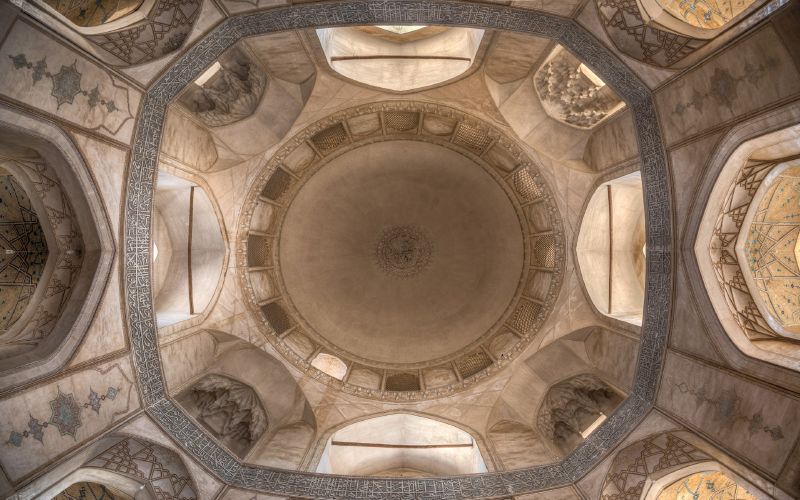 |
- Agha Bozorgh Mosque - Kashan
The only mosque in Iran which has two courtyards(Summerall and winter yard). It
NEVER forget the Persian monuments' ceilings.
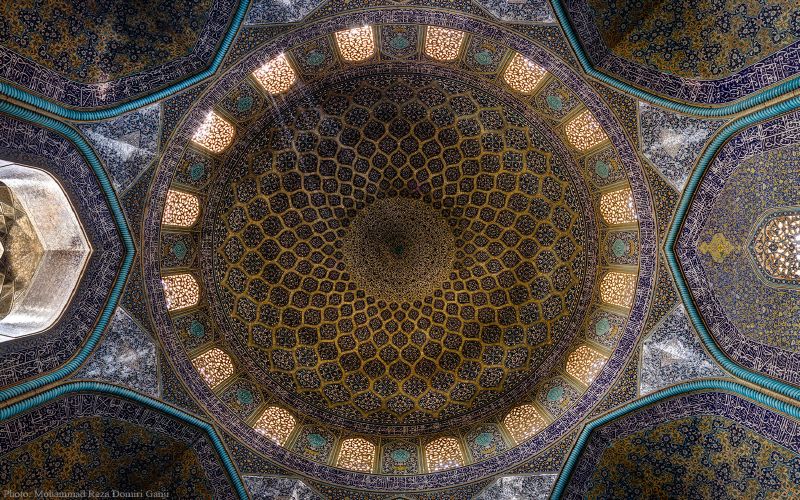 |
Sheikh Lotfolah Mosque - Isfahan
The Pinnacle Jewel of Iranian Architectural Masterpieces
An unusual mosque in
The net size of the dome chamber is 18.8 meters by 18.9 meters and the walls around this are 1.6 meters thick
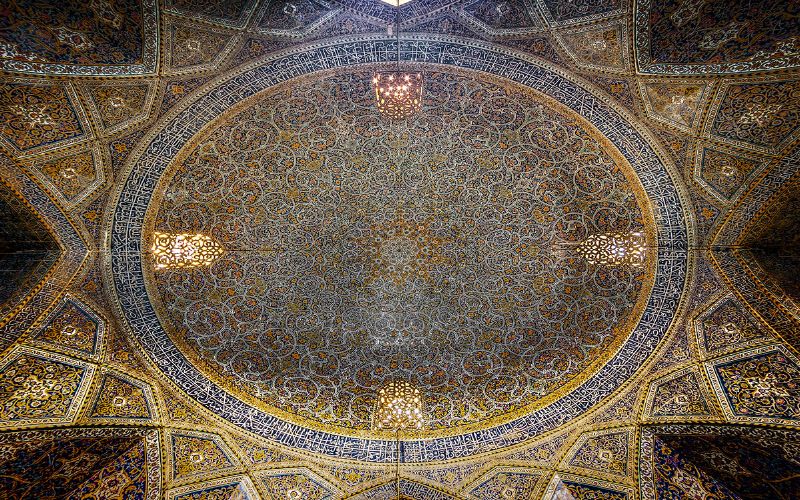 |
-Seyed Mosque - Isfahan
This 19th-century mosque is the fourth historical Jam-e-Mosque (congregational) of Esfahan.
The mosque is decorated with the best Iranian decorative elements consisting of inlaid work, tilework, and calligraphy in the styles of Bannaie (masonry) and Nastaligh.
This is the biggest mosque from the Qajar era which is notable for its architectural features and ornamental elements, especially the tiles and several inscriptions. The important parts of the building are the portal, the courtyard, the portico, the dome, a prayer room with columns, a porch, a place, of course, rooms around the courtyard on two floors, and rooms for the residential students. More
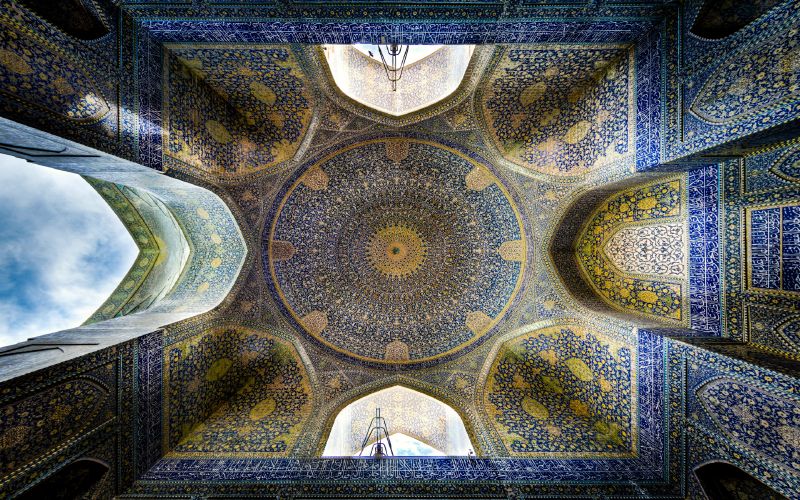 |
- Abbassi Jame Mosque or Shah Mosque
A Vast Origin of the Islamic Architecture Clad by a Turquoise Glaze.
One of the most beautiful mosques in Isfahan and a gem at Naghsh e Jahan square which is a huge structure said to contain 18 million bricks and 475,000 tiles and with a high cost for the Safavid Shah. Each part of this structure is an artistic work that all have created a unique mosque called the "Shah Mosque".
The most important part of this mosque is its main dome, which has a voice reflection.
One of the most fantastic phenomena of this mosque is the breathtaking echo in the dome chamber, below the main dome. For each impact made it echoes back 18 times the reaction initially. As one approaches the center of the dome, the number of reactions decreases but the range of amplification increases. Perhaps the designer wanted to remind us of this Farsi saying:
The claims times the real owning of each person becomes equal to a constant
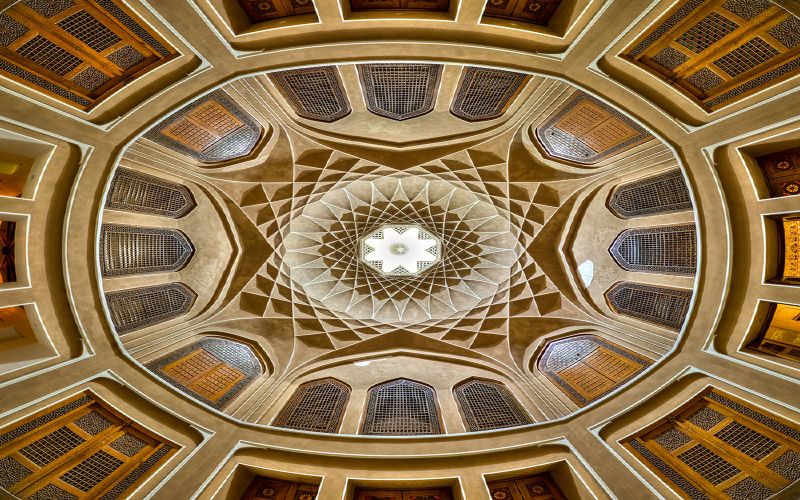 |
_ Dowlat Abad Garden - Yazd
A mechanical masterpiece called the Wind Catcher is made by the people of
The Dolat Abad Garden in Yazd is built in the 18th century at the time of the Afshari. Like the Iranian houses, it has two internal and external parts. The outdoor area includes gardens and beautiful spaces that can be noticed at the entrance. The existence of interior sections in Iranian houses represents a concept in Iranian architecture that offers privacy to the family as opposed to the outside which is more exposed.
A distinguished building in this complex is a windy one located inside the garden. Windward is a rooftop tower of houses located in desert areas for ventilation and natural air conditioning. The symmetrical moldings applied and the colored glasses of this building are exceptional. The most
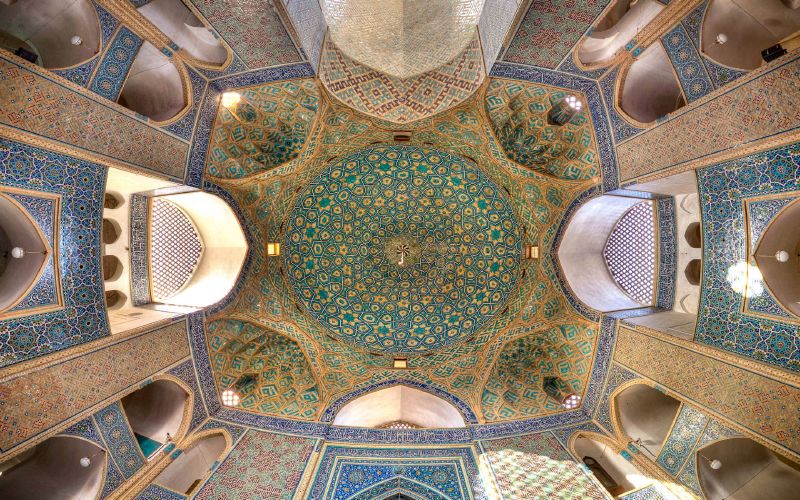 |
- Jame Mosque - Yazd
A 900 years old mosque with the tallest Minarets in Iran.
There are
The dome of the mosque consists of two layers of plaster and its altar is endowed with a fascinating mosaic tile. When you enter the mosque, you will be so
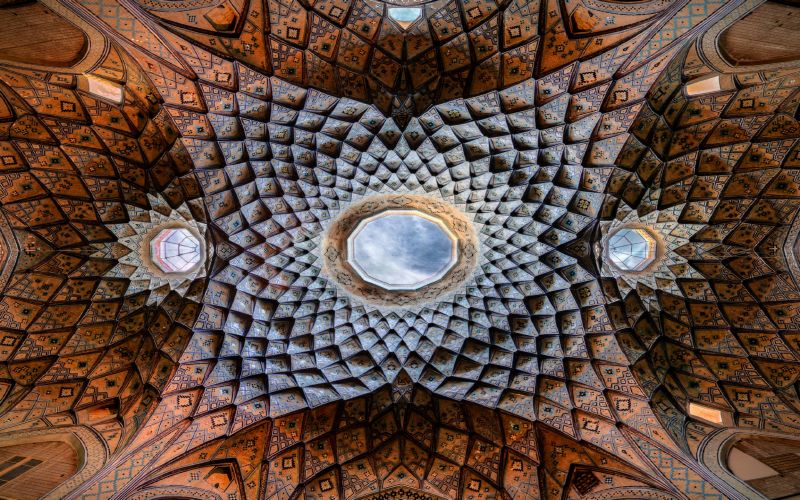 |
- Amin ol Dole Carevanseray - Kashan
Kashan's bazaar has been one of the most important markets on the Silk Road route.
This market has many different segments with various shops. Aminoddole Plaza is one of the several plazas and perhaps the most majestic one in the
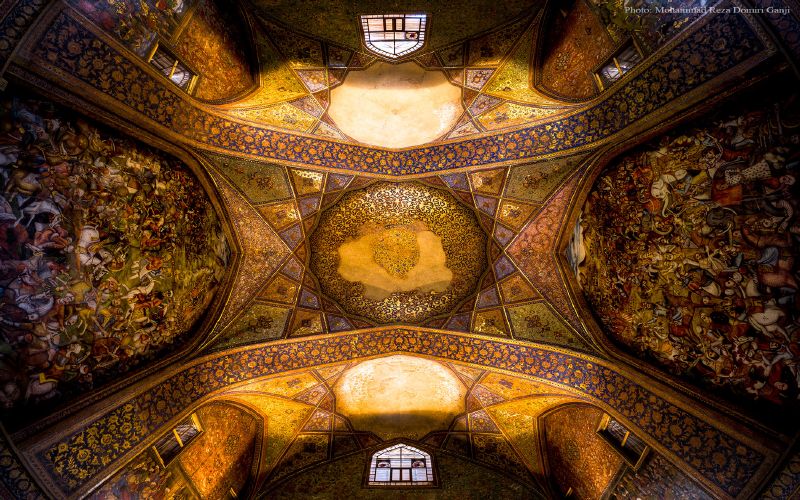 |
- Chehel Sotoon Palace
The Most Brilliant Chandelier at the Hall of the Safavid Architecture Era.
Adjacent to the Naghshe Jahan square In the middle of the garden is laid Chehel Sotoon (Forty Column Palace). The palace was built primarily during the reign of Shah Abbas I, with a 'U-shaped plan, comprised of the Throne Hall and flanking rooms in the north and the southern part of its eastern side.
Over time, some changes have been made by other Safavid kings. The palace covers an area of 2125 square meters (57.5 meters by 37 meters)
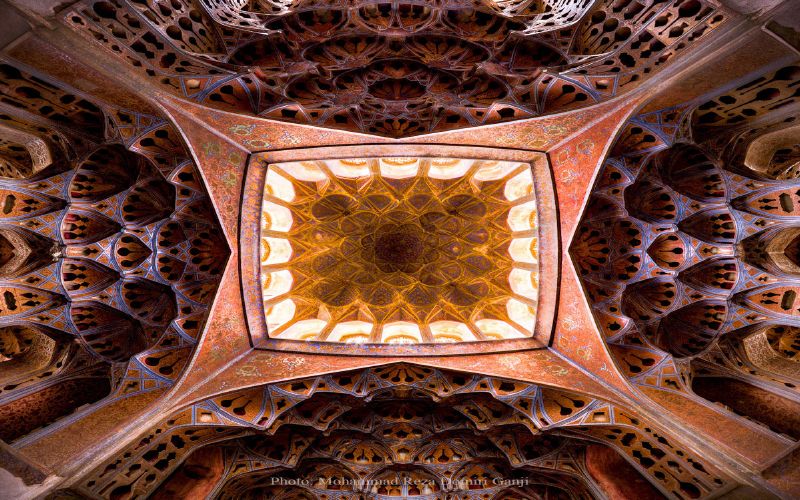 |
- Ali Qapu Palace
The Beating Heart of Administration And the Highest Building in the Cardinal Point of the Capital.
In "Naghsh-e-Jahan Square, all around the rectangular lofty wall, it is only Ali Qapu palace with an exceptional recess of 7 meters from its surrounding wall on the west, which dates back to 1597 A.D. According to some references it was built at the site of another Timurid palace (15th century) instead.
In the palace, there are 52 rooms, every one different from the others regarding the architectural or decorative plan
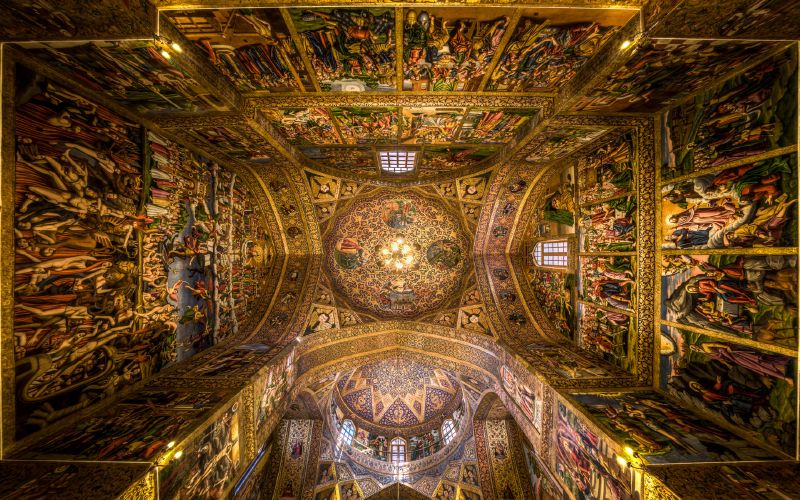 |
- Vank (all saviors') Cathedral The most Spectacular Church in Iran
This cathedral is called; Kelisa (Church) as a congregational church of Esfahan. It was built initially as a small Church called; Amena Pergaige in 1606 A.D., and then expanded to its present size later in 1655 A.D., with a gorgeous nave topped by a 38- meter lofty double-layer dome. The nave is adorned all over by mural paintings, including three genres of Iranian miniature, Armenian, and Byzantine either the lower part of the polychrome tilework, which is mostly similar to the arabesque designs of mosques and some realistic patterns are more similar to the Armenian style designed. More
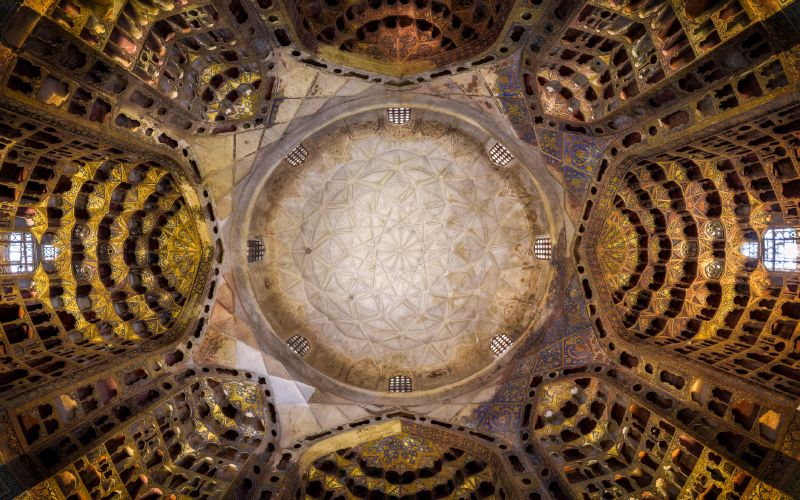 |
- Sheikh Safi al Din Khanegah and Shrine Ensemble in Ardabil
This great building is a Khangah which is a spiritual retreat place in the Sufi order. It is built between the beginning of the 16th century and the end of the 18th century, with several sections and different functions like a mausoleum, library, school, hospital, kitchens, bakery, and some offices. In addition to its historical significance, the site is of high value in Iranian architecture. Also, from
 |
- Borujerdi House
The magnificence of desert house architecture
Kashan is a city of beautiful houses with unique desert architecture. This historic city has some of the most beautiful and attractive houses in Iran that attract all visitors. Among all traditional mansions, Boroujerdi's house is the most famous of them. It was built in 1857. The Borujerdi House consists of the best Iranian architectural elements like
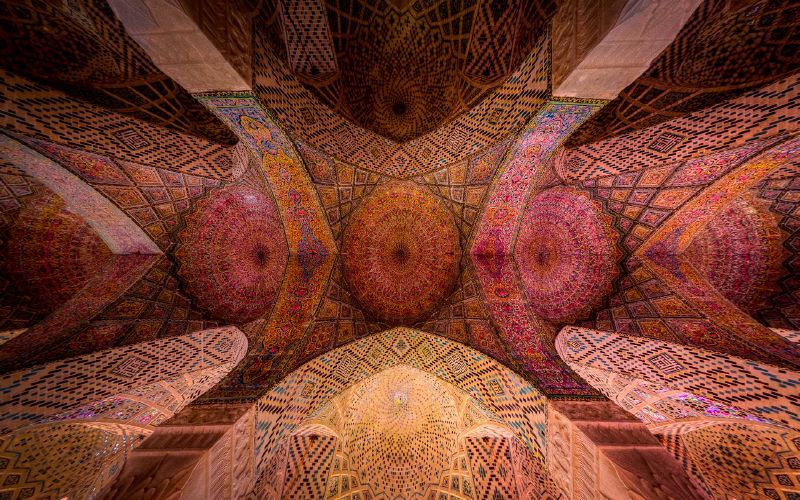 |
- Nasir-ol -molk Mosque
One of the most elegant and photographed architectural works in southern Iran.
The Rose Mosque was built in the late 19th century and its colorful tiles (an unusually deep shade of blue) are exquisite. There are particularly fine muqarnas in the small outer portal and in the north of Iwan, but it is the stained glass windows, the carved pillars, and the polychrome faience of the winter prayer hall that dazzle the eyes when the sun
The mosque attracts most visitors early in the morning (
 |
- Kordasht Bath
The Iranian bath has
With the arrival of Islam in Iran, baths were regarded as a part of starting religious ceremonies, and numerous baths were generally built next to mosques and public places
Kordasht bath in
Top reasons to visit Kordasht
- The Kordasht Hammam complex served as an exclusive bathing place for members of the Safavid dynasty royalty;
- The steam room is set in a large garden with stunning views of the surrounding Kordasht Mountains;
- The murals are simply spectacular inside the Kordasht hammam;
- The natural light enters through the channels of the ceiling which illuminate the octagonal room containing the main basin of the hammam; and
- This Kordasht bath is two centuries old and underground.
- Details
- Category: What to see in IRAN